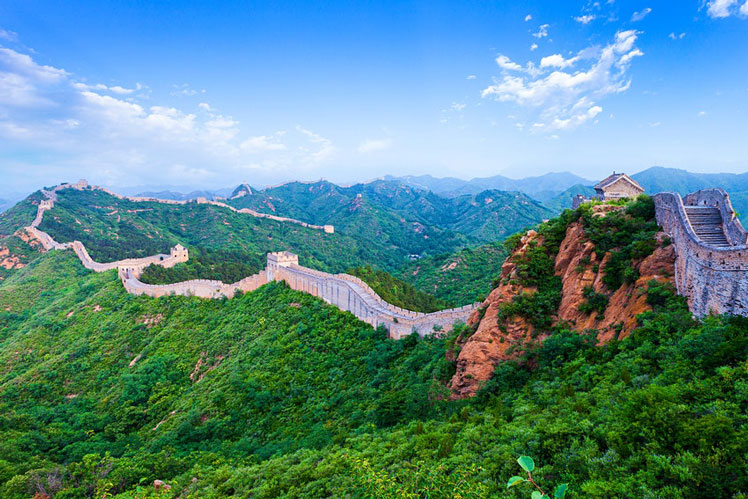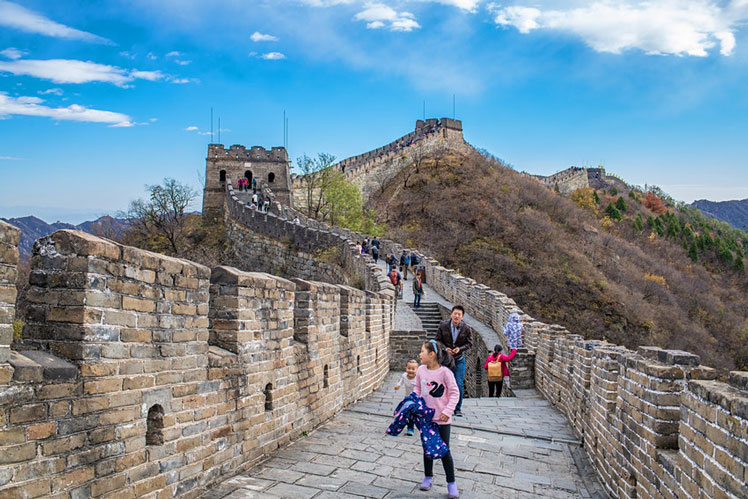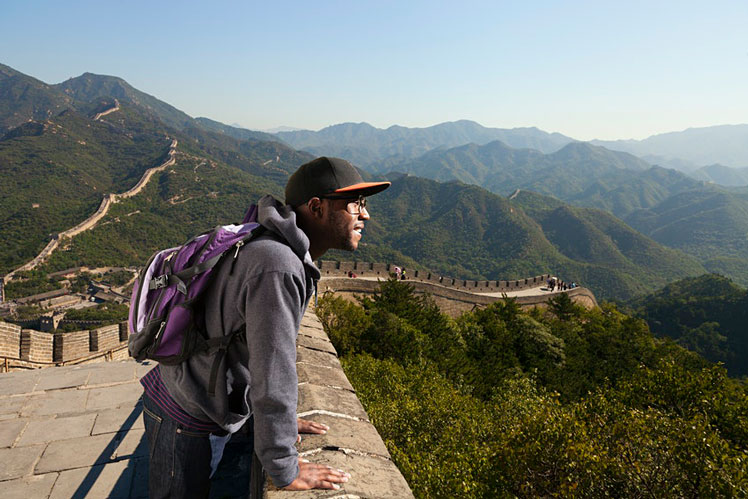
Great Wall: get to know China's most iconic structure
TripFalcon September 02, 2020
Last Update: 2020-09-02 12:56:00Cloaked in legend and mystique, the Great Wall of China crosses mountains, grasslands and desert on its tireless course across what used to be China’s northern frontier.
A border defence system garrisoned by hundreds of thousands of soldiers at various times in China’s turbulent history, the Great Wall exists today in a state of picturesque yet precarious ruin, a fading relic with only a tiny fraction of its total length restored and open to tourists.
What is the Great Wall?
The Wall has loomed large in the world’s imagination since travelers first brought tales of it to the West around the 16th century. Even today, this remarkable monument to human endeavor remains a misunderstood marvel. In fact, it’s not one Wall but a great many border defence structures built centuries apart, and which, when taken together present an architectural record of the ebb and flow of conflict between the settled Chinese and the fierce nomadic tribes beyond the Wall, such as the Xiongu (descendants of the Huns) and the Mongols.
Introducing China
The earliest Great Wall dates back almost 2000 years to the emperor who first unified China, Qin Shu Huang (of Terracotta Warriors fame), though most of what is visible today was built just five centuries ago in the Ming Dynasty (1368–1644). The Ming built or rebuilt atop older stretches of wall to form an undulating, overlapping defensive barrier stretching from ocean to desert. The strategically critical upland sections around the capital Beijing, amounting to around 600km of the Ming Great Wall, were built from slabs of local granite and bricks, lined with ornate watchtowers and often followed the high ridgelines of mountains. Along China’s arid northern plains, meanwhile, the Wall was less formidable, fashioned mostly from tamped earth.
The absolute length, including every branch, tributary and intervening natural feature (such as impassable cliffs) of the Ming Great Wall has been put at a staggering 8850km. A 2012 Chinese government survey calculated the total length of all fragments of the Great Wall that have ever stood across multiple dynasties, including parallel walls and walls that have weathered away completely, to be 21,196km. From east to west, the Wall stretches across 23 degrees of longitude and worms through 15 Chinese provinces. When the sun sets on the Wall’s eastern tip near the Korean border, it takes almost two hours until it dips behind its far-western reaches along the old Silk Road into Central Asia.

The Wall is one of the most recognisable landmarks in the world yet is often misunderstood © zhu difeng / Shutterstock
How was the Great Wall used?
During the Ming Dynasty, almost a million troops were garrisoned on the Wall (roughly 110 soldiers per km), living in the watchtowers and moving rapidly between them when necessary to repel an invasion. The Ming’s great enemy, the Mongols, were formidable horse-mounted soldiers and archers, and so the Chinese depended on the Great Wall to mount an effective defence. As well as being an elevated highway for transporting troops, horses and equipment, it also had a beacon-tower system, using smoke signals generated by burning wolf dung to transmit news of enemy movements back to the capital Beijing. Weapons used by defenders were surprisingly advanced for the time, and included automatic crossbows, canon, and an early type of landmine.
But despite the Ming’s mastery of wall defence, the Manchu found a way through (walls are only as reliable as their gatekeepers), conquered Beijing and established the Qing, China’s last imperial dynasty (1644–1912). Although the Qing had some use for the Ming walls, and added a few of their own, the greatest era of wall building in the history of mankind had come to an end, and the battlements were eventually abandoned, their unmanned bricks and stone at the mercy of scavengers.
The Great Wall in modern times
Travelers to Beijing in the late 19th century would journey the 60km out of the city to the Great Wall by mule litter, a bone-rattling expedition that would take two days. Their destination was Badaling, a high gorge in the Jundu Mountains. The Wall here, though crumbling, was particularly grand, reflecting the strategic importance of this portal between the fertile lands of the capital and the plains beyond. By 1909, China’s first self-built railway connected the capital to Badaling, but visits to the Great Wall were later curtailed by the war with Japan and then the Chinese Civil War.

Sections of the Wall have been restored in modern times © Michael Gordon / Shutterstock
The triumphant Communists didn’t initially have much interest in the Wall, with Mao Zedong encouraging farmers living nearby to use it as a source of free building materials. In the mid 1950s, however, it was decided that the Great Wall at Badaling should be the site of the first major Wall restoration since the Ming Dynasty. Then, and again in 1987, two restoration projects have resurrected over 8km of wall and more than 20 watchtowers. Revitalized as a patriotic exemplar of the People’s Republic of China, hundreds of foreign heads of state including Nixon, Thatcher, Gorbachev and Obama have smiled for the cameras on its battlements, and hundreds of millions of tourists, both Chinese and foreign, have huffed and puffed up its steep steps.

The Great Wall of China can be packed with tourists or empty, depending on which section you go to © Roberto Westbrook / Getty Images
Visiting the Great Wall
Along with Badaling, which these days feels like a tacky ski resort with its cable cars and souvenir stands, there are several other restored sections of Ming Great Wall set up for tourists, such as Mutianyu, Jinshanling and Simatai, all within range of Beijing. The most memorable way to climb upon the dragon’s back, however, is to seek out a stretch of derelict, "wilderness" Great Wall, overgrown with vegetation and free from tourists. These whimsical tracts of stone make for incredible photographs, but they can be difficult to access and dangerously unstable, so your best bet is to join a group hiking trip such as those offered by Beijing Hikers and Wild Wall Experiences.

